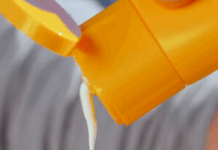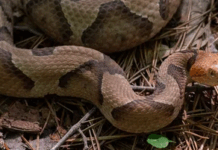Horticulture 2020 Newsletter, No. 38
https://hnr.k-state.edu/extension/info-center/newsletters/index.html
Blog Post: http://www.ksuhortnewsletter.org
Video of the Week: Garlic, Easy to Grow
https://kansashealthyyards.org/all-videos/video/garlic-easy-to-grow-and-store
Events
Kansas Forest Service Tree, shrub Seedling Sale, September 1 – October 15
Reminders
- Plant Kentucky bluegrass by October 1. Tall fescue should be seeded no later than October 15.
- Herbs can be dug from garden and transplanted into pots for indoor use during the winter.
VEGETABLES
Garlic Planting Time
October is a good time to plant garlic (Allium sativum) if you want large quality cloves next summer. Apply 3 pounds of 10-10-10 fertilizer per 100 square feet and mix into the soil before planting or fertilize according to soil test. Plant individual cloves point up and spaced 6 inches apart and 1 to 2 inches deep. The larger the clove planted, the larger the bulb at harvest. Water in well and mulch with straw to conserve soil warmth and encourage good establishment.
Harvest will not occur until next summer. Test dig when the lower 1/3 of the foliage is yellow. If the cloves have segmented, it is time to harvest. If they haven’t segmented, wait another week or two. Elephant garlic (Allium ampeloprasum) should also be planted now. It is a plant with a milder garlic flavor and is actually a closer relative to the leek than to true garlic.
Inchelium Red has an excellent storage life and Chesnok Red isn’t bad. Others you can try include Armenian, Music, Purple Glazer, Carpathian Mountain, Metechi, China Strip, Ajo Rojo, Asian Tempest and Silver White. Kansas has the type of climate that allows us to grow a wide variety of garlic types well. (Ward Upham)
FRUIT
Fruit Planting Preparation
If you plan to develop or add to your fruit garden next year, now is a good time to begin preparing the planting site. Grass areas should be tilled so grass does not compete with the fruit plants for soil moisture and nutrients. Have the soil analyzed for plant nutrients. Your local K-State Research and Extension agents have information to guide you in taking the soil sample. From that sample, the agent can provide recommendations on what and how much fertilizer to add to correct nutrient deficiencies.
Organic materials such as compost, grass clippings, leaves, hay, straw or dried manure, can be tilled into the soil to help improve its condition. Do not use grass clippings that have been treated with a crabgrass killer as tree growth may be affected. Lawns treated with crabgrass preventers are fine to use but avoid those treated with crabgrass killers.
Time and weather conditions generally are more suitable in the fall than in the late winter and spring for preparing soil. If fruit plants can be set by early April, they will have developed a stronger root system to support plant growth than they would if planted later.
If there are only a few plants to be planted, consider tarping each planting area to guard against a wet spring delaying planting after plants are shipped and received.
Also, fruit tree planting can be done in the fall but plants may need to be watered during the winter if the weather is warm and dry. (Ward Upham)
MISCELLANEOUS
Amaryllis, Bringing it Back In
With proper care, amaryllis will bloom year after year. Bring the pot in before the first frost and place in a dark location. Withhold water so leaves have a chance to dry completely. Then cut them off close to the top of the bulb. Amaryllis needs to rest for at least a month before the plant is encouraged to grow. It takes an additional six to eight weeks for the plant to flower.
When you are ready for amaryllis to resume growth, water thoroughly and place the plant in a warm, sunny location. Do not water again until the roots are well developed because bulb rot is a concern. Amaryllis needs temperatures between 50 and 60 degrees during the period before flowering. Higher temperatures can weaken leaves. The flower bud may start to appear right away or the plant may remain dormant for a period of time, but eventually all mature bulbs do bloom if they have been given proper care during the growing season. Keep the plant in a cool location and out of direct sunlight when the flower buds begin to show color so that the flowers last longer. Amaryllis can remain in bloom for about a month. (Ward Upham)
Yellow Jacket Wasps
We have had reports of yellow jackets becoming more noticeable as they scavenge for food. They are most active from about mid-August until the weather turns cold in the fall. These wasps do sting so be careful.
The yellow jacket wasp is about 3/4″ in length and can resemble a bee from a distance though bees have more hair and are duller in color. Also, yellow jackets like to frequent areas with food (human or pet) or compost piles rather than flowers. Be especially careful if drinking soda outside as they are attracted to the sugary fluid.
If a nest is found, it is best to avoid the area as the wasps are more aggressive near their nest. These are beneficial insects as they feed on soft bodies insects such as caterpillars and sawfly larvae and should not be destroyed unless the nest presents a danger to people. Rather concentrate on removing food sources near areas you frequent as much as possible. This includes picking up and disposing of fruit that may have dropped from fruit trees. (Ward Upham)
Preventing Sunscald on Thin-Barked Trees
Many young, smooth, thin-barked trees such as honeylocusts, fruit trees, ashes, oaks, maples, lindens, and willows are susceptible to sunscald and bark cracks. Sunscald normally develops on the south or southwest side of the tree during late winter. Sunny, warm winter days may heat the bark to relatively high temperatures. Research done in Georgia has shown that the southwest side of the trunk of a peach tree can be 40 degrees warmer than shaded bark. This warming action can cause a loss of cold hardiness of the bark tissue resulting in cells becoming active. These cells then become susceptible to lethal freezing when the temperature drops at night. The damaged bark tissue becomes sunken and discolored in late spring. Damaged bark will eventually crack and slough off. Trees often recover but need special care — especially watering during dry weather.
If you have seen this type of damage in previous years or fear you have susceptible trees, preventative measures are called for. Applying a light-colored tree wrap from the ground to the start of the first branches can protect young and/or recently planted trees. This should be done in October to November and removed the following March. Failure to remove the tree wrap in the spring can prove detrimental to the tree. (Ward Upham)
Questions on Ornamental Grasses
We are starting to receive questions on whether it is best to cut back ornamental grasses in the fall or spring. As a rule, ornamental grasses should not be cut back while green because they need time to move the energy found in the foliage into the roots. Even when browned by cold weather, most gardeners will leave the foliage until spring because of the interest it adds to winter landscapes. Early March is the preferred time to cut back these plants. However, dry foliage is extremely flammable and should be removed in the fall from areas where it is a fire hazard.
Another question we often receive is whether we can divide ornamental grasses in the fall. Spring is the preferred time because divisions done in the fall may not root well enough to survive the winter. (Ward Upham)
Contributors: Ward Upham, Extension Associate
Division of Horticulture
1712 Claflin, 2021 Throckmorton
Manhattan, KS 66506
(785) 532-6173
For questions or further information, contact: wupham@ksu.edu OR cdipman@ksu.edu
This newsletter is also available on the World Wide Web at:
http://hnr.k-state.edu/extension/info-center/newsletters/index.html
The web version includes color images that illustrate subjects discussed. To subscribe to this newsletter electronically, send an e-mail message to cdipman@ksu.edu or wupham@ksu.edu listing your e-mail address in the message.
Brand names appearing in this newsletter are for product identification purposes only. No endorsement is intended, nor is criticism implied of similar products not mentioned.
K-State Research and Extension is committed to making its services, activities and programs accessible to all participants. If you have special requirements due to a physical, vision or hearing disability, or a dietary restriction please contact Extension Horticulture at (785) 532-6173.
Kansas State University Agricultural Experiment Station and Cooperative Extension Service K-State Research and Extension is an equal opportunity employer. Issued in furtherance of Cooperative Extension Work, Acts of May 8 and June 30, 1914, as amended. Kansas State University, County Extension Councils, and United States Department of Agriculture Cooperating, Ernie Minton, Dean.
Ward Upham
Extension Associate
785-532-1438




